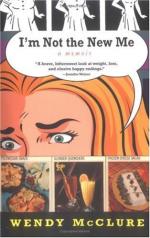David Wilkie, born in Scotland, at Cults in Fifeshire, November 18, 1785, came to London in 1805 to enter the Royal Academy schools, after some preliminary training at Edinburgh. His first picture, in the exhibition of 1806, “The Village Politicians,” attracted attention, and was followed the next year by “The Blind Fiddler.” The work of a youth of twenty-two, it is remarkable for its close observation of character and the skilful use made of what may be termed the theatrical faculty of grouping the personages so that their action tells the story. This is not a merit, and there is little doubt that the scene would be greater as art were it more consistently human. Character is well and pictorially rendered; but by its insistence in every figure, we feel that it is but a moment since the curtain was withdrawn and the tableau vivant shown. This and the pictures following it met with the most unbounded popular approval, were reproduced by engraving, and exercised an influence increased by the honors and fortune which were showered on the painter.
In 1825 Wilkie made an extended continental tour, and three years later, after his return to England, changed his class of subjects for historical and portrait painting, bringing to these later themes the same ability and the same lack of naivete which characterized his former work. A Royal Academician since 1811, he was appointed first painter in ordinary to the king, on the death of Lawrence, in 1830. He was knighted in 1836, and died at sea on June 1, 1841, while returning from Egypt.
[Illustration: THE BLIND FIDDLER. FROM A PAINTING BY SIR DAVID WILKIE.
“An itinerant musician is entertaining a cottager and his family with a tune on the fiddle; the father gayly snaps his fingers at an infant on the knees of the mother, behind whom a mischievous boy, with the poker and bellows in his hands, is mimicking the action of the musician. With this exception, all, even the dog standing by the chair of its mistress, appear to be intent upon the music of the blind fiddler.” This quotation, from the catalogue of the National Gallery where the original picture is placed, accurately describes it.]
[Illustration: CHOOSING THE WEDDING GOWN. FROM A PAINTING BY WILLIAM MULREADY IN THE SOUTH KENSINGTON MUSEUM, LONDON.
To the title of this picture, the painter himself added, as expository of his theme and the source of his inspiration, the following passage from Goldsmith’s “Vicar of Wakefield”: “I had scarcely taken orders a year, before I began to think seriously of matrimony, and chose my wife, as she did her wedding gown, not for a fine glossy surface, but for such qualities as would wear well.” The picture thus affords a good instance of the dependence on literature of the painters of Mulready’s school. Its title alone would suffice, so well and simply is the story told; but, apparently, with the British public, and in the painter’s mind, it gained an added grace by diverting the visual impression of the observer to the realm of literature. The picture is here reproduced from a copyrighted photograph by Frederick Hollyer, Kensington.]




